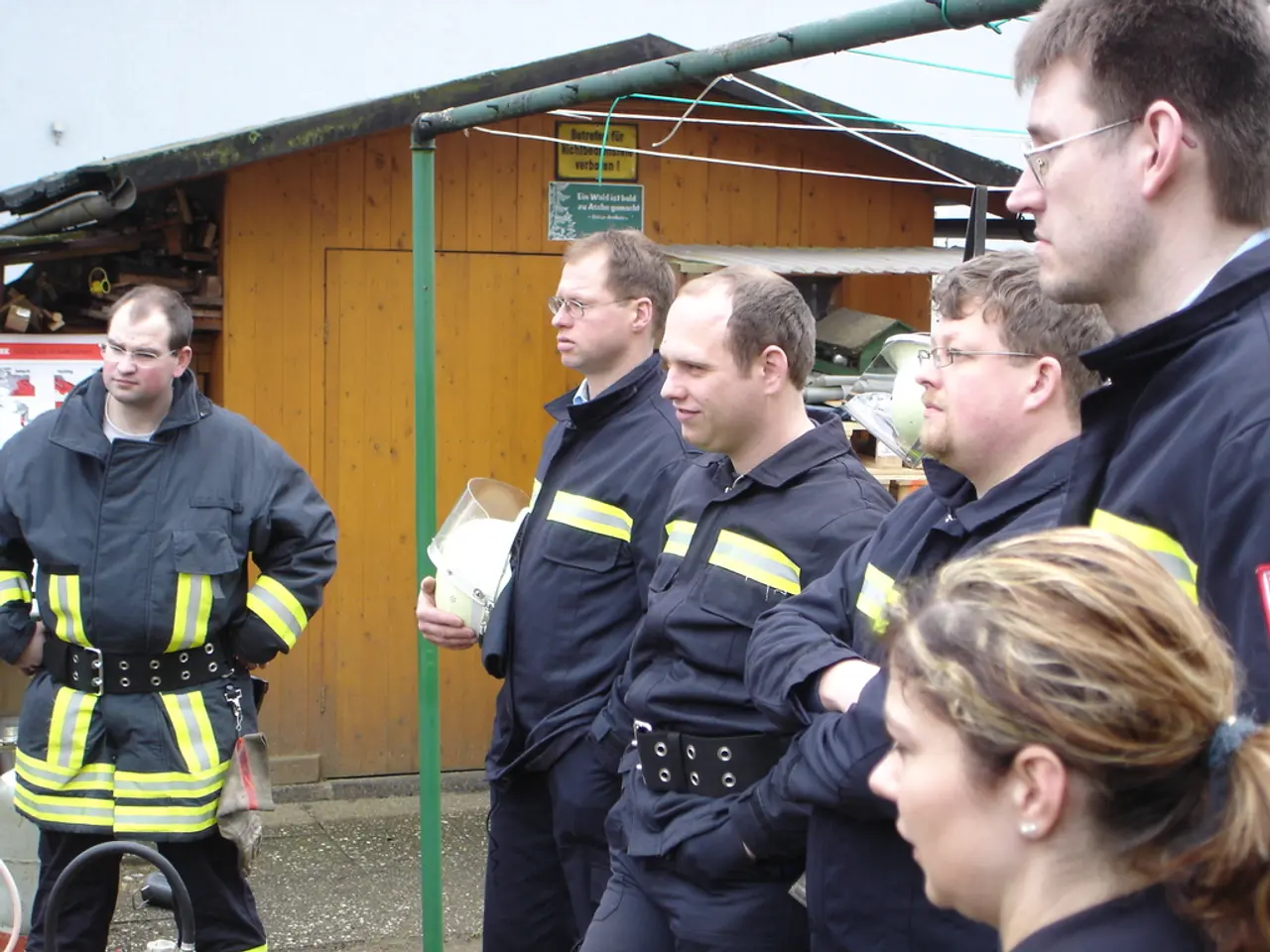Design for Fire, Health, and Life Safety
Article Title: Embracing Cross-Disciplinary Collaboration for Safe, Sustainable, and Compliant Building Design
In a recent discussion, experts highlighted the importance of balancing fire, health, and life safety design with sustainability in architectural projects. This approach, as outlined in the Fire Safety for Very Tall Buildings by SFPE (2022), can be achieved through early coordination among stakeholders, clear accountability roles, and fostering cross-disciplinary understanding.
Early Coordination
Integrating fire safety engineers, sustainability experts, structural engineers, and other disciplines from the project's inception is crucial. This collaboration helps identify potential conflicts and opportunities to harmonize fire safety and sustainable design strategies, improving outcomes for both.
Clear Accountability
Under the Building Safety Act 2022, the appointment of an Accountable Person (AP) and a Building Safety Manager (BSM) is mandatory. The AP is responsible for managing building safety risks, while the BSM oversees day-to-day operations, ensuring compliance with fire safety regulations and clear lines of responsibility throughout the design, construction, and occupancy stages.
Cross-disciplinary Understanding
Developing a shared knowledge base and communication framework is essential so that architects understand fire safety requirements and sustainability professionals appreciate fire safety imperatives. This understanding aids in choosing materials and structural designs that achieve fire resistance while minimizing environmental impact.
Performance-based Approaches
Innovative, performance-based fire protection measures, such as integrated detection and suppression systems, can be tailored to facility use and environmental goals while complying with regulatory safety standards.
Material and Structural Balance
Seeking structural solutions that maximize fire resistance with minimal material use is key. For instance, fire-retardant treatments maintaining fire rating but reducing volume or density support sustainable construction goals without compromising safety.
Compliance and Documentation
Thorough fire risk assessments, up-to-date safety case reports, and adherence to evolving codes ensure safety practices align with the latest statutory requirements, integrating sustainability considerations where possible.
By following these practices, architects can meet the Building Safety Act’s mandates, optimize fire and life safety, and simultaneously promote sustainable building design through cross-functional collaboration and clear governance.
The discussion also touched upon the need for a broader understanding of fire performance across disciplines, especially in preserving existing buildings, and the challenge of incorporating fire safety into lifecycle carbon assessments. Digital tools and BIM were mentioned for tracking fire-critical information and fostering transparent decision-making.
Manufacturers' early engagement was emphasized as a means to improve detailing, reduce costly rework, and ultimately save lives. The Grenfell Tower refurbishment served as a cautionary example of the dangers of unbalanced trade-offs in fire safety and sustainability.
In conclusion, delivering safe, sustainable, and compliant buildings depends on early coordination, clear accountability, and cross-disciplinary understanding. Whether through typology-based risk assessment, strategic specification tools, or material trade-off analysis, fire, health, and life safety design is no longer an afterthought but a critical, integral component of architectural expertise.
Fire safety engineers, health and wellness professionals, science experts in material research, and fitness and exercise specialists could collaborate during building design phases to develop holistic strategies for improving building user health, safety, and overall wellbeing.
To achieve both fire resistance and sustainable construction goals, it's essential to seek structural solutions that maintain fire rating with minimal material use, such as utilizing fire-retardant treatments in the building design process.




